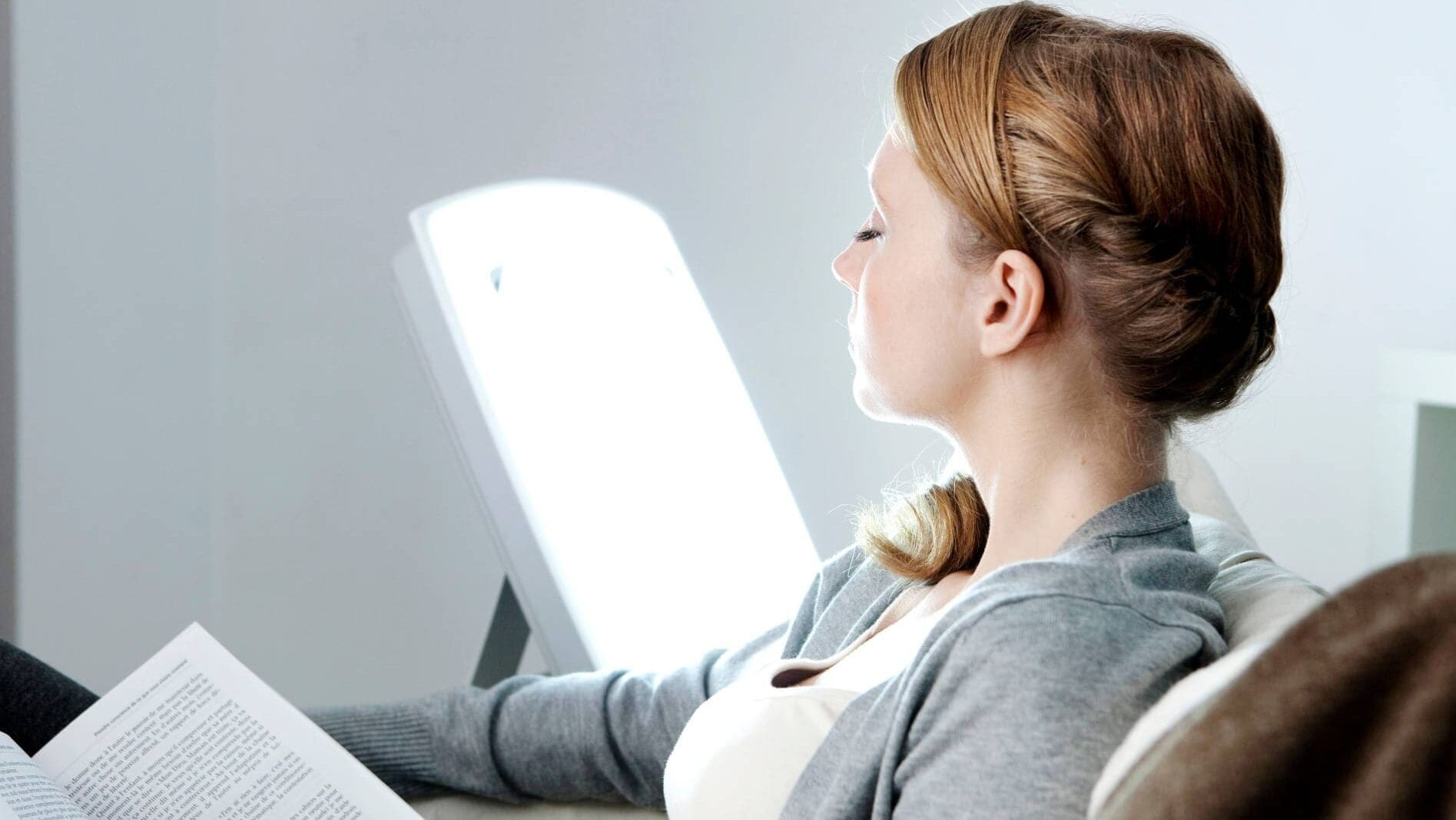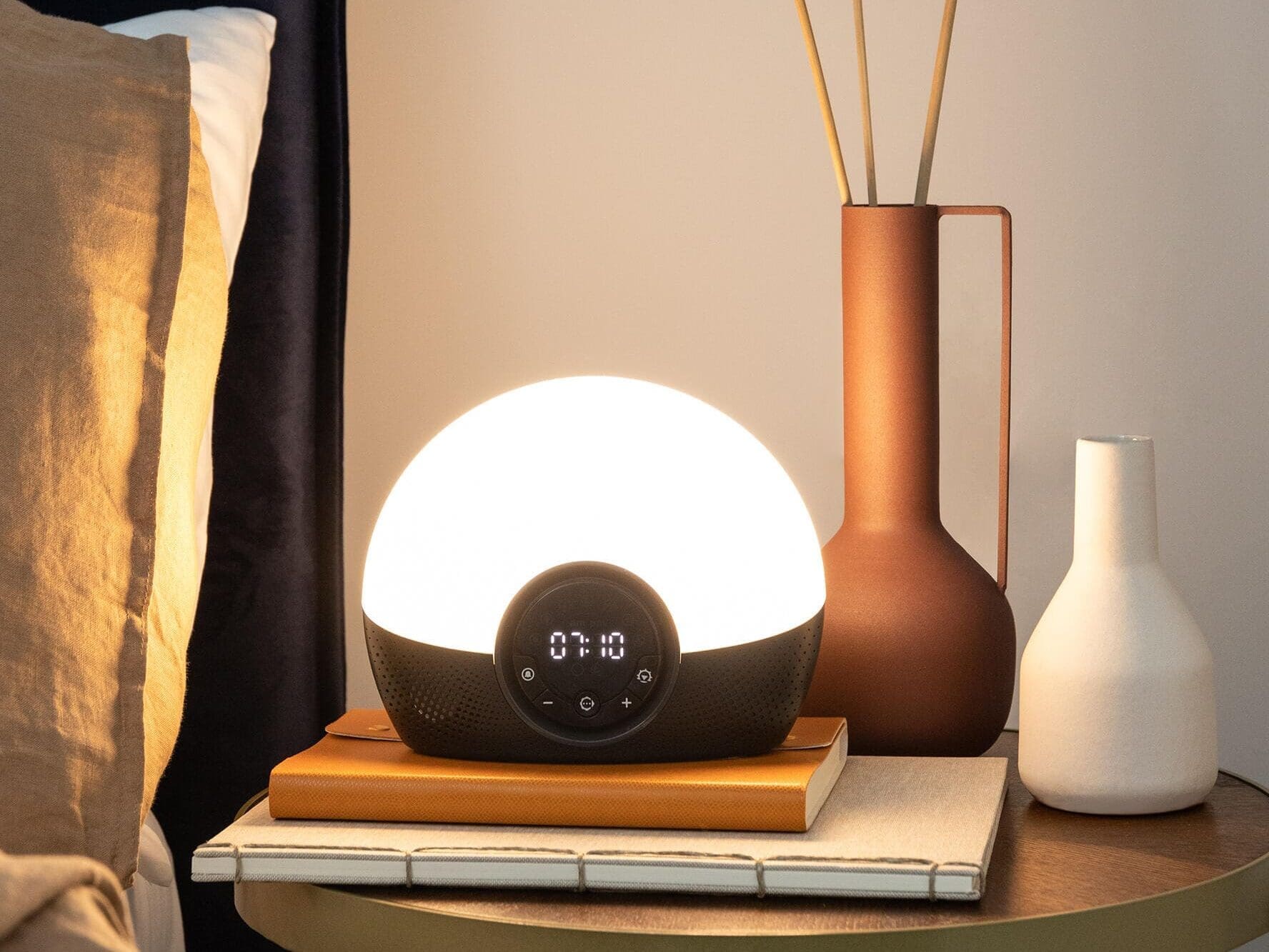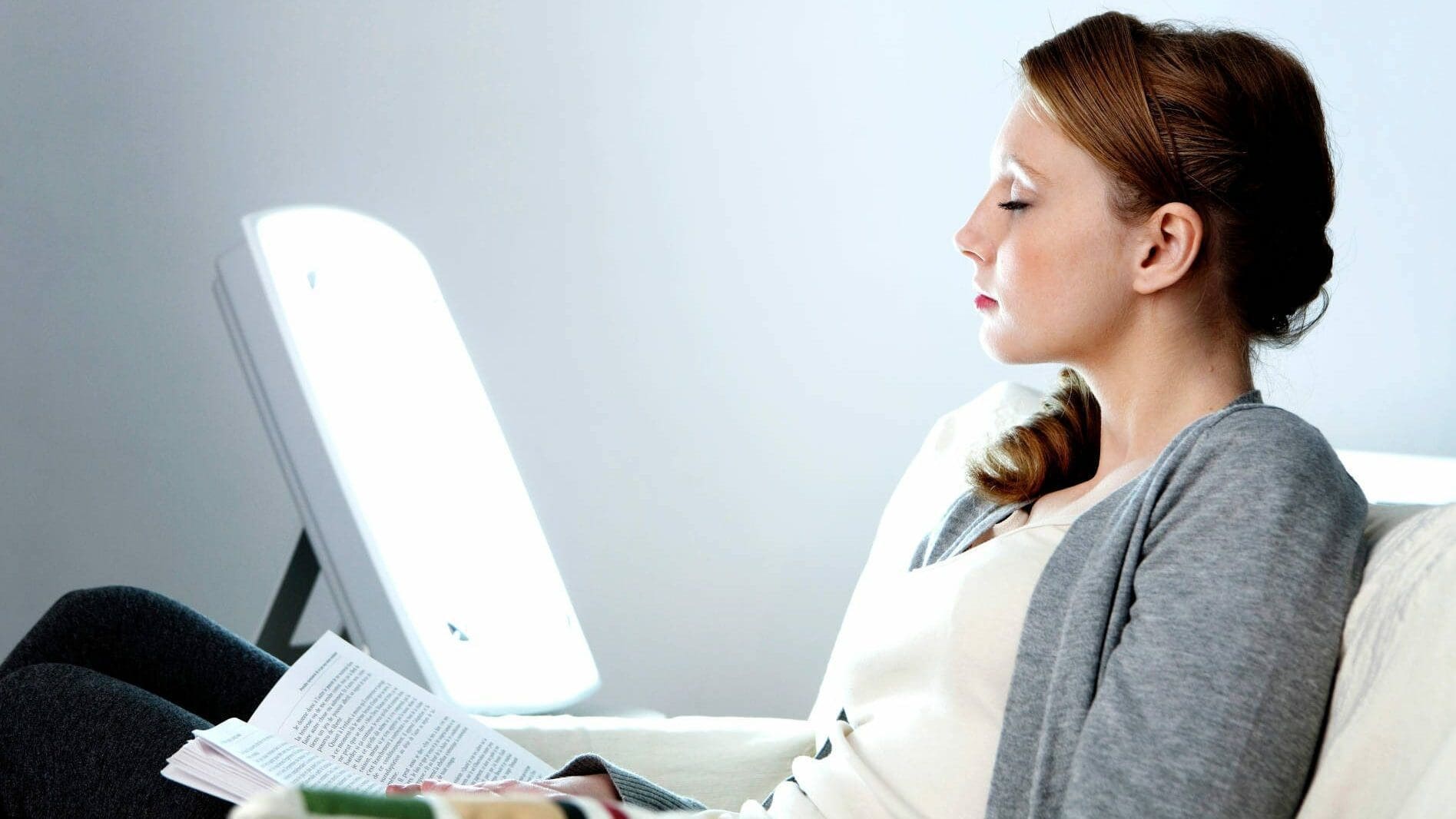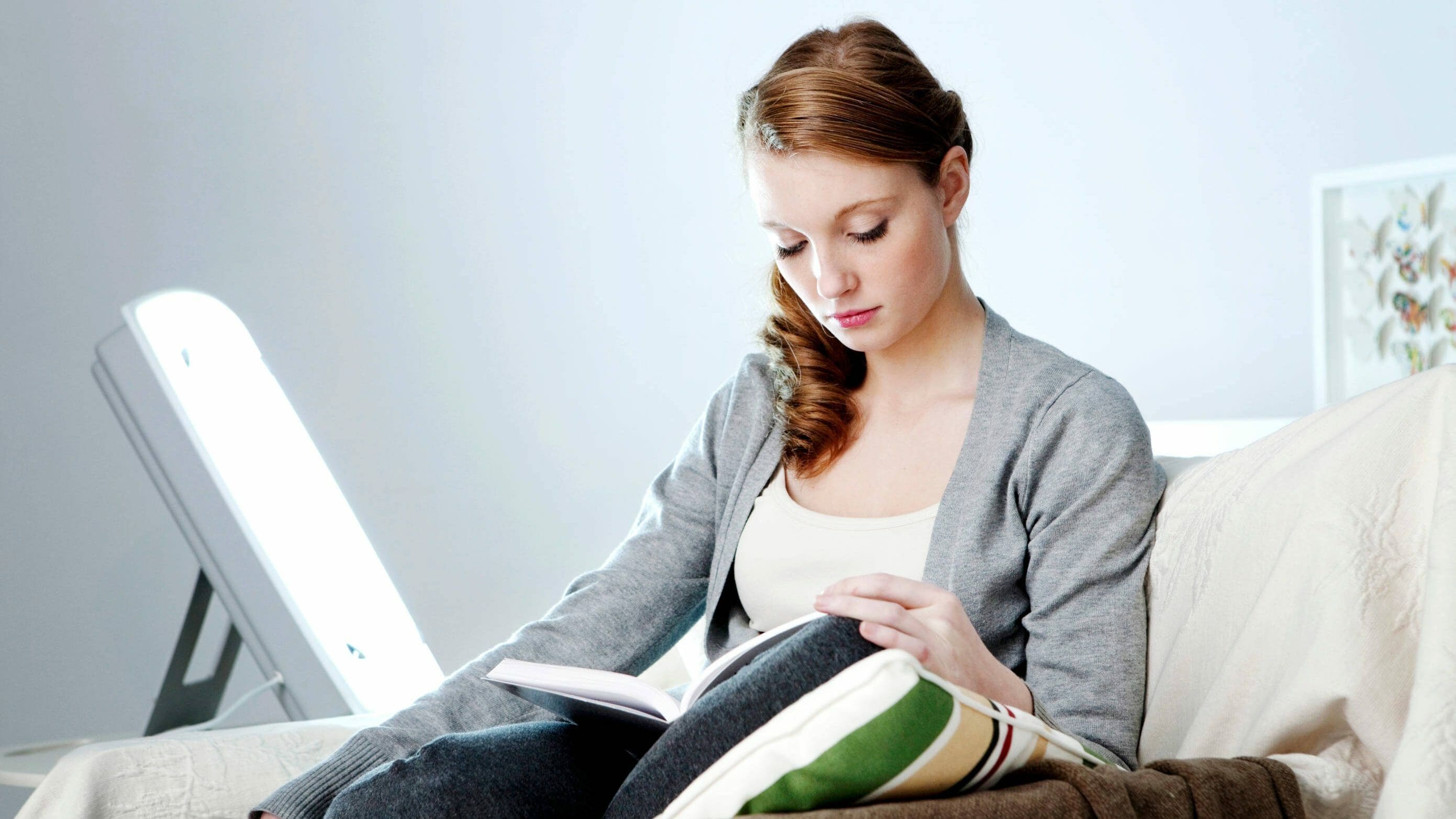
Lumino Therapy
You will find on this page information regarding Light Therapy (SAD Light), which refers to treatment for Seasonal Affective Disorder; Also known as Seasonal Mood Disorder, Depressive Disorder, Winter Depression, Winter Blues, January Blues, Summer Depression, or Seasonal Depression.
Light Therapy is recommended to help improve mood in cases of SAD (Seasonal Affective Disorder). A SAD light can help reduce stress, alleviate symptoms of depression, and may even lower the risk of certain illnesses, including cancer.
Light Therapy means exposing oneself to artificial light that produces more than 10,000 lux. A light bulb emitting 10,000 lux can be compared to a standard 100-watt light bulb, but it is capable of illuminating a larger area. Early clock light brands sometimes used only a simple 100-watt bulb.
David Servan-Schreiber mentions in his book Healing Without Freud or Prozac that Light Therapy helps combat stress and depression. He explains the positive influence of Light Therapy right at the beginning of his book; It’s one of his first pieces of advice.
Sun Light Exposure (20minutes a day)
David states: “Expose your arms or chest to the sun if you can’t simply go for a walk and expose your head to sunlight,” as a way to reduce the risk of cancer.
By the way, taking a walk helps not only with sunlight exposure; It also greatly aids in relaxation. It helps regenerate the body by allowing us to breathe deeply and refresh ourselves for a few minutes.
Vitamin D Food Supplements
Vitamin D is a vitamin naturally produced by the body when we expose ourselves to sunlight. It can also be found in higher quantities in certain types of food.
It helps regenerate the body by strengthening the immune system. Additionally, it supports digestion and other bodily functions.
At the beginning of the COVID-19 pandemic, Vitamin D was recommended by doctors worldwide to help boost the immune system. It’s always a good idea to check your Vitamin D levels through a blood test; You should not hesitate to consult your doctor to ask this informations.
If you have a Vitamin D deficiency, taking supplements can help, but it’s important to always seek advice from your doctor first. Do not buy Vitamin D supplements without medical guidance.
Light Therapy: How Clock Lights Help Regulate Our Body Clock?

When we start learning about Light Therapy, we also come to understand the principle of the “Body Clock.” Every human being has an internal body clock that affects daily habits such as sleep patterns and mealtimes; When we feel tired or hungry.
A Clock Light, or “Réveil Aube Lumineux” (sunrise alarm clock), is a type of alarm clock that wakes you not by ringing, but by gradually turning on a light over several minutes.
This modern technology (Which emulates natural sunlight) offers several benefits:
1. Clock Lights Help to reduce Stress
Mornings are a crucial moment in our day.
Waking up slowly with a gentle light warms the body and encourages natural Vitamin D production; Right at the time our body needs it most.
Scientifically, this is tied to human evolution. Our body clocks have been shaped by exposure to the sun and traditional mealtimes. You may be surprised to find how much using a Clock Light can reduce your stress levels.
As mentioned earlier with the term SAD Light, this tool is known to “Help us wake up on the right foot” (“Nous aider à nous lever du bon pied”).

2. Clock Lights Help Reset our Body Clock
Sometimes, we have a bad night’s sleep or changes in our routine; For example, staying out late on the weekend. This can disrupt our natural body clock and affect our sleep pattern. While one or two days of disruption may be manageable (as we can rest later), the impact can still be noticeable.
By the way, speaking of sleep: did you know that the phrase “Sleep recovery” is actually incorrect?
You can rest and recover from tiredness, but You cannot truly recover lost sleep. “Sleep recovery” is a common but misleading expression. A more accurate concept is Rest recovery; A subtle but important distinction.
Maintaining a good sleep pattern allows for better quality sleep and rest. It is often said that sleeping before midnight helps multiply the quality of sleep; The hours of sleep before midnight are especially valuable.
As David Servan-Schreiber mentions in his book, Light from a Clock Light mimics natural sunlight. With one of these devices, you may notice it becomes easier to wake up. Some models also allow you to activate a radio if the light alone is not enough; Just like a traditional alarm clock.
Clock lights can be relatively expensive, but it’s worth noting that you’re not likely to buy one every year. They typically last for 10 years or more. You can also find more affordable options from other brands or second-hand versions on various websites.
Lumie Clock Light

Philips Clock Light

If you are interested in Clock Lights, you may also find SAD Lights (S.A.D. stands for Seasonal Affective Disorder) helpful. SAD Lights complement Clock Lights by helping to reduce stress and improve low mood.
Light Therapy: SAD (Seasonal Affective Disorder) and Bright Light Therapy

A S.A.D. light allows for Light Therapy. In the morning, you can sit in front of the light for 10–20 minutes while eating breakfast or reading a book.
Light Therapy is especially helpful for improving mood and preventing SAD symptoms, dark thoughts (“idées noires” in French), or general sadness.
It is complementary to using a Clock Light; It’s not only acceptable to use both, it’s actually recommended. Since both are used in the morning, they do not interfere with sleep. On the contrary, they support healthy sleep-wake cycles.

You can find different SAD Light Brand following link :
- https://www.lumie.com/en-us/bright-light-therapy
- https://www.beurer.com/uk/c/wellbeing/light-therapy/sad-therapy-lights/
- (Alternative SAD light are able to be found in other brands.)
The only side effect commonly mentioned regarding Light Therapy is that exposing oneself to a SAD light may slightly reduce the skin’s ability to absorb natural sunlight. However, this is considered a minor side effect and is generally not a cause for concern.
It’s important to remember that SAD lights, Clock lights, and Vitamin D supplements can all be beneficial as part of Light Therapy. However, they should not be seen as complete replacements for natural sunlight. Going outside, walking, and breathing fresh air will always offer additional health benefits. Light Therapy is a complement, not a substitute, for spending time outdoors.
SAD lights and Light Therapy are especially popular in northern regions of the world, near the Arctic Circle, where sunlight is limited for up to six months of the year.
Interestingly, Scandinavian and Northern European countries are also known for including happiness as part of their national well-being metrics, sometimes referred to as part of their GDP (PIB in French); Measuring and seeking ways to improve happiness across the population.
Another interesting point regarding sunlight exposure: While we often assume that living in a southern country is more advantageous due to increased sunlight, Vitamin D deficiency is also common in southern regions. This is because extreme heat can limit people’s willingness or ability to spend time outdoors.
So in reality, Vitamin D levels in southern and northern populations can be surprisingly similar. High temperatures and indoor lifestyles can reduce sun exposure, regardless of geography.
It’s also important to note that SAD lights and Light Therapy are not the same as UV (ultraviolet) light exposure. UV light emits ultraviolet rays and can damage the skin, increasing the risk of skin cancer.
In fact, UV exposure can be thought of in terms of “Sun Capital”; The idea that our skin can only handle a limited amount of sun over a lifetime. The more we expose ourselves, the more we use up that “sun capital,” and our skin becomes more vulnerable over time.
In any case, try to walk for at least 30 minutes every day, and don’t forget to wear sunglasses or sunscreen during the summer if you’re exposed to direct sunlight.
As the Monty Python famously sang in their movie: “Always look on the bright side of life.” It’s a funny idiom, but it captures the idea well Light Therapy truly helps in that direction. You’ll likely see only positive changes, with minimal to no side effects. Don’t hesitate to discuss it with your doctor.
And remember: Avoid UV light, but incorporate SAD light; it can help you stay positive while reducing stress and anxiety.

Comments are closed